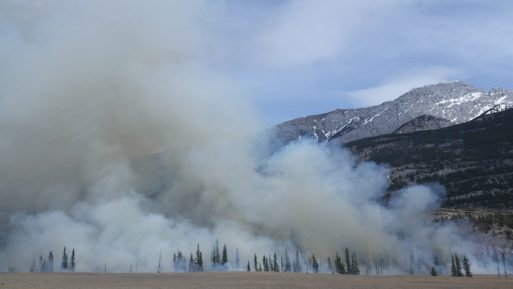
Wildfires pose a serious public health risk
Summer 2023 has already been marked by a tragic number of wildfires. The Hawaii island of Maui is still reeling from the fires that engulfed the historic city of Lahina and killed dozens of people, while Canada is experiencing the worst year on record for wildfires. A brutal combination of drought across large swaths of North America and record-high temperatures have created an unfortunate tinderbox ripe for wildfires throughout the U.S. and Canada.
And while wildfires are devastating in the moment, their impact on public health may not be entirely felt until later, as the effects of smoke inhalation linger in the human body. Smoke from wildfires can travel long distances and carries within it a dangerous concoction of different particles that humans inhale. The human body has defenses like nose hairs that can protect against certain air-borne particles, but the most worrisome particles measure a mere 2.5 micrometers. These particles are known as PM2.5 and their small size makes them able to evade barriers in the human body and settle in the lungs before potentially being absorbed into the bloodstream. Because our immune system can’t neutralize the particles, they trigger an inflammatory response within our bodies.

Children are more susceptible to respiratory issues caused by wildfire smoke
This can lead to a host of respiratory and cardiovascular troubles. A recent study found that even short-term exposure to PM2.5 particles increases hospitalizations for cardiorespiratory distress. The risks are greatest to children, adults over age 65, and the immunocompromised. Research published in PLOS Medicine indicates that in the days immediately following the 2007 San Diego wildfires, there was a 243% increase in hospital ED visits for respiratory distress in children under age 1 year. Even much later down the line, there was a 72% increase in acute bronchitis in children. Another study showed that summer wildfires in Montana were associated with a higher rate of influenza the following winter, indicating that the impact on lung function can continue for months. And because many of the particles being inhaled are carcinogenic, there may be a link to cancer. Research by Dr. Weichenthal found that people living within a 30-mile radius of a wildfire within the past 10 years were 5% more likely to get lung cancer and 10% more likely to get brain cancer. Speaking to Everyday Health, professor Rebecca Saari declared, “Wildfires are the largest environmental health risk factor contributing to premature deaths worldwide.”
Given the risks of wildfire smoke, it is crucial to minimize exposure. The Center for Disease Control recommends that people check their local air quality reports and stay inside if air quality is poor. Minimizing outdoor activity and exercising only indoors is also advised, as is keeping indoor air quality good by not burning candles, smoking, or vacuuming. Lastly, avoiding activities that could lead to wildfires, such as unsafe campfire practices, could help prevent tragedy in the first place.

 Wildfires: Long-term Health Risks and How to Protect Yourself
Wildfires: Long-term Health Risks and How to Protect Yourself


 “Help Me, Helen”
“Help Me, Helen”

 “As Tears Go By” by Marianne Faithfull
“As Tears Go By” by Marianne Faithfull














